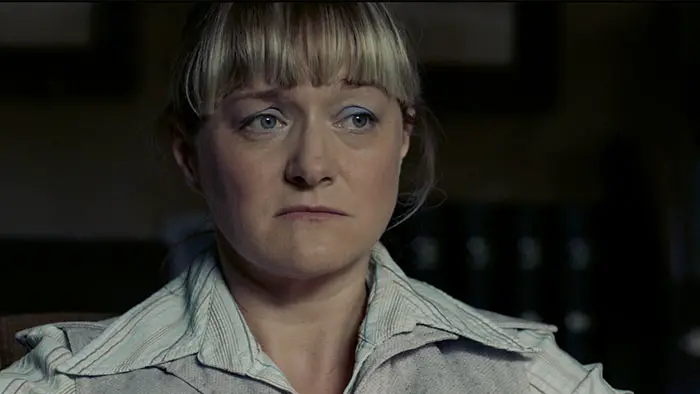
On my first day of college, I took an English assessment exam and was told that I could not enter Freshman English. When I looked at my test scores, I found that I scored perfectly on the essay portion of the exam but failed miserably in reading comprehension. So, what did they have me do in my “dumbbell” English class? Write essays, of course. That was the day I discovered I was dyslexic and that I had somehow faked my way through English classes for the past twelve years.
Yewweng Ho’s Mical is the true story of Pat Jones (Jayne Lunn), who discovered her son, Michael (William Biletsky), suffered from dyslexia, and “suffer” he did. The short film opens with Pat being told that her son is a disruptive force in class and accused of being a bad parent. On the other hand, Michael is scolded by teachers as being both stupid and defective and then promptly bullied after class.
Mical is an issue-oriented short whose purpose is to educate the world on the pervasiveness of dyslexia, which affects over 15% of the population. Worse, 50% of prison inmates are diagnosed as dyslexic. With no help from the school, Pat took her son’s education into her own hands and read everything written about the disorder written before the mid-80s. Essentially making herself one of Britain’s leading authorities on the subject.

“…Michael is scolded by teachers as being both stupid and defective…”
On her own, she taught her son the skills needed to cope and survive with dyslexia. Seeing that her son was not the only one, Pat offered to help other students in the district. Her years of work would lead to the development of the Nessy method, currently being used in schools in the United Kingdom.
As a short film, Mical is a pretty straight-forward story. It opens with the problem, moves into the solution, and ends on a happy note, relaying Pat Jones’ courage and passion for helping others like her son. Inspiring, to say the least. It’s a great film to watch for parents with dyslexic children as you’ll find you’re not alone.
If I had any criticism of the film, it’s the musical montage in the middle highlighting Pat’s grit and determination in researching dyslexia—backed up by a disco-version of Bobby Hebb’s Sunny. It’s an eye-rolling moment and very British. But you’ll get over it for the important and uplifting message of Mical.

"…her years of work would lead to the development of the Nessy method..."


